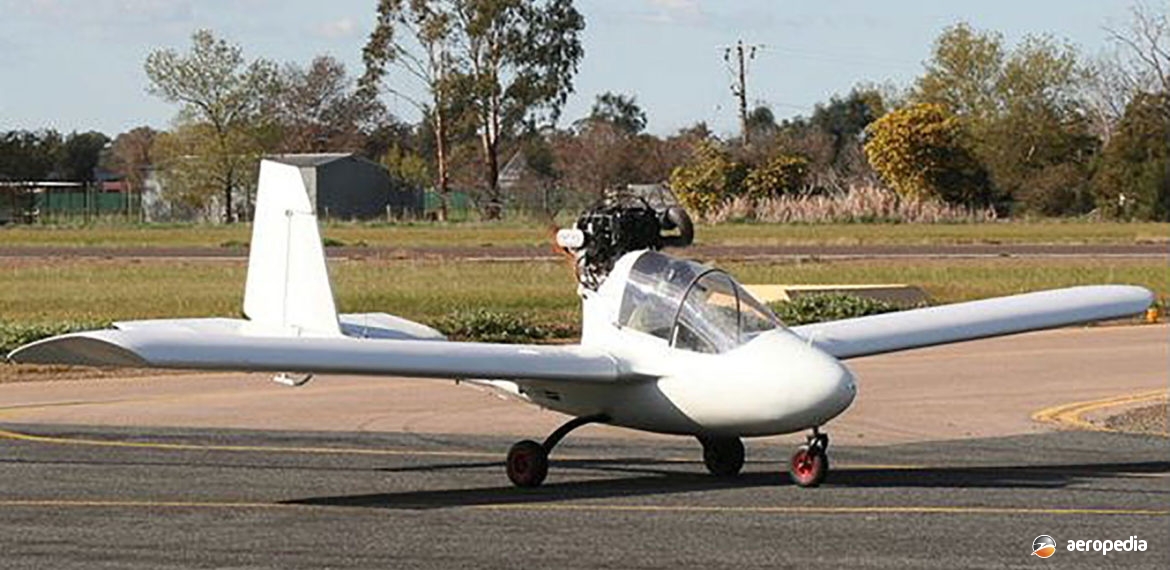Photograph:
An Ace Stingray at Serpentine, WA (The Aussie Aviator)
Country of origin:
Australia
Description:
Single-seat light sport aircraft
Power Plant:
One 48 kw (65 hp) Rotax 440 two-cylinder, two-stroke, air-cooled engine
Specifications:
- Wingspan: 8.1 m (26 ft 6 in)
- Length: 5 m (16 ft 6 in)
- Chord: 1.19 m (47 in)
- Max cruising speed: 111 km/h (69 mph)
- Economical cruising speed: 83 km/h (52 mph)
- Stalling speed: 61 km/h (38 mph)
- Rate of climb at sea level: 229 m/min (750 ft/min)
- Take-off distance: 37 m (120 ft)
- Fuel consumption: 9 litres (2 Imp gals) per hour
- G limits: +6 / -4G
- Loaded weight: 150 kg (331 lb)
History:
The Stingray was a mid-wing fully cantilevered light sporting aircraft with a pylon mounted pusher engine designed by Mr Raymond Tolhurst and built in some numbers at the Camden, NSW facility of Composite Engineering in the 1980s. It featured a streamlined fibreglass fuselage attached to a tricycle undercarriage.
The Stingray was derived from the concept of the Grasshopper and could be fitted with a variety of engines, including the 250 cc and 440 cc Fuji Robin engines, as well as engines in the Rotax series. At least seven were built at Mr Tolhurst’s facility at Camden, this facility also building 13 Grasshoppers. In the United States the type was known as the Polaris.
Examples which have appeared on the RAA register included 10-0448, 10-0064, 10-0448, and 10-0854. A couple of examples survive in museums.

